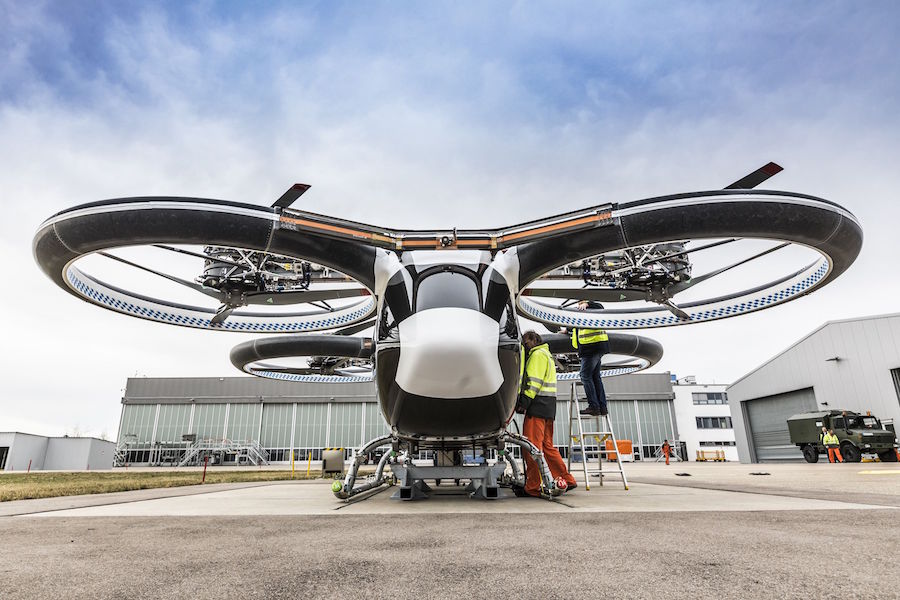Airbus Pauses CityAirbus NextGen eVTOL Program Amid Battery Challenges
The future of urban air mobility (UAM) has taken a significant turn as Airbus announced a strategic pause on its CityAirbus NextGen eVTOL program. This decision follows a comprehensive review of business viability and technology requirements, signaling a shift in the aerospace giant’s approach to electric vertical takeoff and landing (eVTOL) aircraft.
The Evolution of the CityAirbus Program
Airbus first introduced the CityAirbus prototype four years ago with the ambition of launching a commercially viable eVTOL before the end of the decade. The project was instrumental in advancing Airbus' knowledge of critical eVTOL technologies, many of which have broader applications across its entire rotorcraft portfolio. Despite this progress, Airbus Helicopters CEO Bruno Even explained that the current conditions do not justify moving forward with a full-scale production program.
“The strategic review we conducted at the end of 2024 showed that the conditions to launch a new program are not necessarily there,” Even stated. “We remain committed to innovation, but we see the need for further advancements before entering the market.”
Battery Limitations and Performance Concerns
One of the primary obstacles to commercial viability is battery technology. Airbus engineers determined that existing battery performance does not yet meet the operational requirements for a viable eVTOL transport system. The minimum acceptable mission profile would require a flight range of 80 to 100 kilometers, and current battery technology falls short of achieving this performance benchmark.
“The ability to perform the mission is critical,” Even emphasized. “We need continued improvements in battery performance before we can consider launching a new program.”
Ongoing Research and Development
Although CityAirbus development is being paused, Airbus remains committed to aviation innovation. The company continues its work with multiple research platforms, including DemonstratorLab, PioneerLab, and DisruptiveLab, all of which focus on next-generation aviation technology.
Additionally, Airbus’ high-speed compound rotorcraft, Racer, recently exceeded expectations by reaching 227 knots—surpassing its target speed of 220 knots. This achievement showcases Airbus’ continued investment in advanced rotorcraft technology that can enhance operational efficiency and capability.
Industry Landscape and Competitive Outlook
Airbus is not alone in reassessing eVTOL development. While it places CityAirbus on hold, competitors such as Boeing and Embraer continue to push forward. Boeing maintains its stake in the advanced air mobility sector through its ownership of Wisk, which is developing a fully autonomous eVTOL. Meanwhile, Embraer spin-off Eve Air Mobility is advancing its four-passenger eVTOL model, and Textron’s eAviation division is actively developing its Nexus prototype in Wichita.
The UAM industry remains in flux as companies navigate regulatory requirements, evolving business models, and technological advancements. Airbus’ decision to delay its program underscores the complexity of bringing eVTOLs to market in a manner that ensures safety, efficiency, and economic feasibility.
Looking Ahead | The Future of eVTOL and Urban Air Mobility
The pause on CityAirbus NextGen does not mark the end of Airbus’ ambitions in urban air mobility. Instead, it represents a recalibration of priorities to align with evolving technological capabilities and market realities.
“The launch of a new program depends on many factors—regulation, business model maturity, and technological readiness,” Even noted. “We see key areas that still need to evolve before we move forward.”
As battery technology progresses and regulatory frameworks solidify, Airbus remains poised to re-enter the eVTOL market at the right time. Until then, the aerospace giant continues to drive innovation across its broader helicopter and advanced mobility portfolio, ensuring it remains at the forefront of future aviation solutions.
